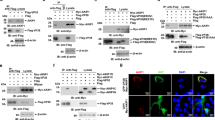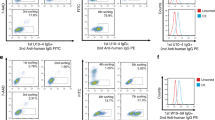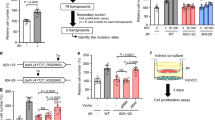Abstract
Here we defined the main viral determinant of Ebola virus pathogenicity; synthesis of the virion glycoprotein (GP) of Ebola virus Zaire induced cytotoxic effects in human endothelial cells in vitro and in vivo. This effect mapped to a serine–threonine-rich, mucin-like domain of this type I transmembrane glycoprotein, one of seven gene products of the virus. Gene transfer of GP into explanted human or porcine blood vessels caused massive endothelial cell loss within 48 hours that led to a substantial increase in vascular permeability. Deletion of the mucin-like region of GP abolished these effects without affecting protein expression or function. GP derived from the Reston strain of virus, which causes disease in nonhuman primates but not in man, did not disrupt the vasculature of human blood vessels. In contrast, the Zaire GP induced endothelial cell disruption and cytotoxicity in both nonhuman primate and human blood vessels, and the mucin domain was required for this effect. These findings indicate that GP, through its mucin domain, is the viral determinant of Ebola pathogenicity and likely contributes to hemorrhage during infection.
This is a preview of subscription content, access via your institution
Access options
Subscribe to this journal
Receive 12 print issues and online access
$209.00 per year
only $17.42 per issue
Buy this article
- Purchase on Springer Link
- Instant access to full article PDF
Prices may be subject to local taxes which are calculated during checkout




Similar content being viewed by others
References
Bowen, E.T.W. et al. Viral haemorrhagic fever in southern Sudan and northern Zaire. Lancet 1, 571–573 (1977).
Centers for Disease Control. Outbreak of Ebola viral hemorrhagic fever—Zaire. Morbid. Mortal. Wkly. Rep. 44, 381–382 (1995).
Peters, C.J., Sanchez, A., Rollin, P.E., Ksiazek, T.G. & Murphy, F.A. in Fields Virology (eds. Fields, B.N., Knipe, D.M. & Howley, P.M.) 1161–1176 (Lippincott-Raven, Philadelphia, 1996).
Baskerville, A., Bowen, E.T.W., Platt, G.S., McArdell, L.B. & Simpson, D.I.H. The pathology of experimental Ebola virus infection in monkeys. J. Pathology 125, 131–138 (1978).
Baskerville, A., Fisher-Hoch, S.P., Neild, G.H. & Dowsett, A.B. Ultrastructural pathology of experimental Ebola haemorrhagic fever virus infection. J. Pathology 147, 199–209 (1985).
Feldmann, H. et al. Filovirus-induced endothelial leakage triggered by infected monocytes/macrophages. J. Virol. 70, 2208–2214 (1996).
Baize, S. et al. Defective humoral responses and extensive intravascular apoptosis are associated with fatal outcome in Ebola virus-infected patients. Nature Med 5, 423–426 (1999).
Villinger, F. et al. Markedly elevated levels of interferon (IFN)-gamma, IFN-alpha, interleukin (IL)-2, IL-10, and tumor necrosis factor-alpha associated with fatal Ebola virus infection. J. Infect. Dis. 179, S188–191 (1999).
Yang, Z. et al. Distinct cellular interactions of secreted and transmembrane Ebola virus glycoproteins. Science 279, 1034–1037 (1998).
Sanchez, A. et al. Biochemical analysis of the secreted and virion glycoproteins of Ebola virus. J. Virol. 72, 6442–6447 (1998).
Weissenhorn, W., Calder, L.J., Wharton, S.A., Skehel, J.J. & D.C. Wiley The central structural feature of the membrane fusion protein subunit from the Ebola virus glycoprotein is a long triple-stranded coiled coil. Proc. Natl. Acad. Sci. USA 95, 6032–6036 (1998).
Volchkov, V.E., Feldmann, H., Volchkova, V.A. & Klenk, H.-D. Processing of the Ebola virus glycoprotein by the proprotein convertase furin. Proc. Natl. Acad. Sci. USA 95, 5762–5767 (1998).
Xu, L. et al. Immunization for Ebola virus infection. Nature Med. 4, 37–42 (1998).
Mbiene, J.P., Maccallum, D.K. & Mistretta, C.M. Organ cultures of embryonic rat tongue support tongue and gustatory papilla morphogenesis in vitro without intact sensory ganglia. J. Comp. Neurol. 377, 324–340 (1997).
Yang, S. et al. Generation of retroviral vector for clinical studies using transient transfection. Hum. Gene Ther. 10, 123–132 (1999).
Pear, W.S., Nolan, G.P., Scott, M.L. & Baltimore, D. Production of high-titer helper-free retroviruses by transient transfection. Proc. Natl. Acad. Sci. USA 90, 8392–8396 (1993).
Feldmann, H., Nichol, S.T., Klenk, H.D., Peters, J. & Sanchez, A. Characterization of filoviruses based on differences in structure and antigenicity of the virion glycoprotein. Virology 199, 469–473 (1994).
Ohno, T. et al. Gene therapy for vascular smooth muscle cell proliferation following arterial injury. Science 265, 781–784 (1994).
Acknowledgements
We thank D. Gschwend, N. Barrett, C. Davis and A. Tislerics for manuscript preparation, J.Stein for discussions and comments, and D. Gordon for discussions of scanning electron microscopy data.
Author information
Authors and Affiliations
Corresponding author
Rights and permissions
About this article
Cite this article
Yang, Zy., Duckers, H., Sullivan, N. et al. Identification of the Ebola virus glycoprotein as the main viral determinant of vascular cell cytotoxicity and injury. Nat Med 6, 886–889 (2000). https://doi.org/10.1038/78654
Received:
Accepted:
Issue Date:
DOI: https://doi.org/10.1038/78654
This article is cited by
-
Crimean–Congo haemorrhagic fever virus
Nature Reviews Microbiology (2023)
-
Ebola virus–like particles reprogram cellular metabolism
Journal of Molecular Medicine (2023)
-
RNF185 regulates proteostasis in Ebolavirus infection by crosstalk between the calnexin cycle, ERAD, and reticulophagy
Nature Communications (2022)
-
Viral genomics in Ebola virus research
Nature Reviews Microbiology (2020)
-
Identity and validity of conserved B cell epitopes of filovirus glycoprotein: towards rapid diagnostic testing for Ebola and possibly Marburg virus disease
BMC Infectious Diseases (2018)



